 Given the complexities of running a construction company, I often get asked “What are your most profitable clients doing that separates them from the rest?” This is a hard question to answer as there are many things best-in-class contractors do to remain at the top. What I can tell you is every one of those companies have a consistent theme; they are always looking to improve from where they are today. This seems intuitive, however, it’s very hard to do. The industry is always dealing with an extraordinary number of hurdles. Shrinking workforce, economic unknowns, volatility in project margins all play into the challenges that layer on top of the day-to-day responsibilities which often feels like a daily fire drill.
Given the complexities of running a construction company, I often get asked “What are your most profitable clients doing that separates them from the rest?” This is a hard question to answer as there are many things best-in-class contractors do to remain at the top. What I can tell you is every one of those companies have a consistent theme; they are always looking to improve from where they are today. This seems intuitive, however, it’s very hard to do. The industry is always dealing with an extraordinary number of hurdles. Shrinking workforce, economic unknowns, volatility in project margins all play into the challenges that layer on top of the day-to-day responsibilities which often feels like a daily fire drill.
You frequently hear construction veterans say the phrase: “Cash is King”. That statement could not be more accurate for contracting companies. The complexity of forecasting cash flow is extremely difficult. Late payments, change orders, invoice processing cycles, delays or canceled projects all affect the timing of the cash flow cycle. A key aspect of cash flow is liquidity. You want your operations management team to evaluate their projects and determine which ones are providing, or using, liquidity.
Given these complexities, leading indicators are frequently used as a risk control mechanism to keep construction companies in a positive position. They serve executives by arming them with an informative output mechanism used to make sound decisions. Without them, you could be rolling the dice with the livelihood of your company.
Leading indicators are unanimously used by best-in-class contractors. They have modified their organization by aligning their objectives and indicators with people, processes and technology applications to produce results that rank in the top quartile regarding profitability and return on investment. One of these metrics is the Liquidity Indicator.
The Liquidity Indicator was first introduced to me by my mentor, Ken Roper. I had the privilege of working directly under Ken’s tutelage for the better half of a decade. As a former CPA, Ken was always focused on the financial strength of his contractor clients. We used the Liquidity Indicator in every engagement we were hired for because of the impact it has across various functions of a successful construction company.
The Liquidity Indicator measures the amount of money tied up in invoices to clients and underbillings compared to what the company owes to subcontractors, vendors and overbillings. The indicator calculates six total balance sheet accounts:
Current Asset Accounts:
- Accounts Receivables
- Accounts Receivables Retention
- Cost and Earnings in Excess of Billings (Underbillings)
Current Liability Accounts:
- Accounts Payable
- Accounts Payable Retention
- Billings and Earnings in Excess of Costs (Overbillings)
Accounts receivables is essentially money that will be converted to cash in the future and underbillings are direct costs that have been incurred but not yet billed for. Accounts payables is money the company will have to pay out and billings in excess of earnings are services the company owes to its customers. Looking at cash flow from a contactor’s perspective, these six balance sheet accounts can be controlled by the project manager. For example, a contractor is funding their own work in process (WIP) with their own cash if the total of the three current assets accounts exceed the total of the three current liability accounts. (A positive number.) On the contrary, the contractor would be funding their WIP if the accounts payable accounts exceed the accounts receivable accounts. (A negative number.)
Illustrative example:
Accounts Receivable = $2,000,000
Accounts Receivables Retention = $250,000
Cost and Earnings in Excess of Billings = $1,000,000
Contractor Funded = $3,250,000
Accounts Payable = $1,500,000
Accounts Payable Retention = $200,000
Billings and Earnings in Excess of Costs = $1,000,000
Owner/Vendor Funded = $2,700,000
The difference between Contractor Funded and Owner/Vendor Funded is $550,000. The contractor is utilizing their own cash to finance their projects in the amount of $550,000. When your company projects are expending cash to finance your WIP, it hinders your company’s ability to invest in other areas of the business.
Another way to assess your liquidity is by calculating the average days outstanding. In this version, you would calculate an average of all three accounts receivable (AR) and all three of your accounts payable (AP) by dividing each one individually by the average daily revenue earned by your company for a specific time period. Average daily revenue is calculated by the total annual revenue divided by the time period of 365 days. Let’s say the annual revenue for this company is $30,000,000, you would perform the following calculations:
Annual Daily Revenue = $30,000,000 / 365
Annual Daily Revenue = $82,192
From this illustrative example, you can safely assume this company produces $82,192 in revenue on a daily basis. Next, you will need to divide the total for each individual AR & AP accounts by the average daily revenue to compute the average days outstanding for this version of the Liquidity Indicator.
Illustrative Example:
Contractor Funded
- Days of Accounts Receivable = $2,000,000 / $82,192 = 24.33 Days
- Days of Accounts Receivable Retention = $250,000 / $82,192 = 3.04 Days
- Days of Costs and Earnings in Excess of Billings = $1,000,000 / $82,192 = 12.16 Days
Project funding to be collected = 39.43 total days
Owner/Vendor Funded
- Days of Accounts Payable = $1,500,000 / $82,192 = 18.25 Days
- Days of Accounts Payable Retention = $500,000 / $82,192 = 6.08 Days
- Days of Billings & Earnings in Excess of Costs = $1,000,000 / $82,192 = 12.17 Days
Project invoices to be paid = 36.5 total days
This calculation means this contractor takes roughly 3 days longer to collect payment than to pay their outstanding invoices. From a benchmarking perspective, both the contractor funded and owner/vendor funded days outstanding would rank high amongst peers.
If this contractor wanted to improve their Liquidity Indicator by focusing on the improvement of the cash collections by targeting an improvement of 4 days in the cycle, they would see an additional $328,768 ($82,192 x 4 days) in cash to invest in other areas of need. This would also shift the day’s outstanding in favor of collecting payment faster than paying invoices which improves how the WIP for this company is being funded. This improvement not only improves the cash flow cycle for your company, but it also provides a strong financing position with your third-party partnerships, such as banking and bonding.
As stated earlier, best-in-class contractors use indicators such as the Liquidity Indicator. It is just one of many that you can add to your toolbox. It adds an additional performance improvement metric for your operations team and company as a whole. In our next newsletter, I will share another industry leading indicator and the impact it can have on your company.

